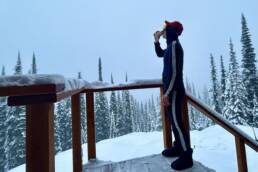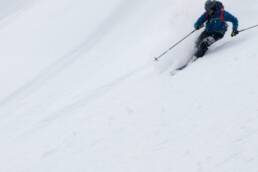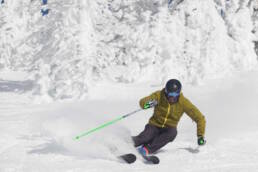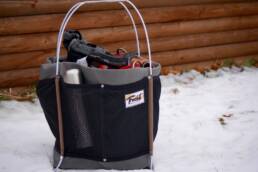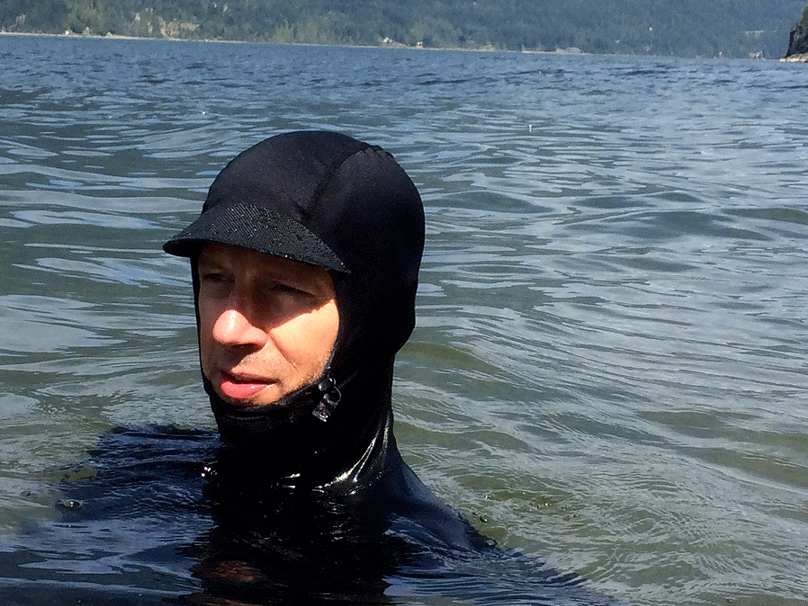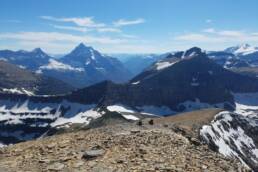Editor Vince Hempsall wore Icebreaker base layers for three months and didn’t launder them. Nose in to this latest review to find out what happened.
It’s hard to believe thirty years ago merino wool had little value on the global textile market. It was deemed a lesser-quality product than traditional wool and was used as a cheaper blend in woolen apparel. Then, in 1994, Brian and Fiona Brakenridge changed the world. The South Island, New Zealand-based sheep farmers developed some prototype thermal underwear from merino wool that proved to be just as warm as regular wool but it didn’t itch the skin. Twenty-four-year-old countryman Jeremy Moon took notice and began marketing the clothing under the company name Icebreaker. The business blew up in the early 2000s and in 2017 Icebreaker was purchased for $204 million by VF Corporation, one of the world’s largest apparel companies. Today, merino wool is a valuable global commodity that’s synonymous with comfort and warmth.
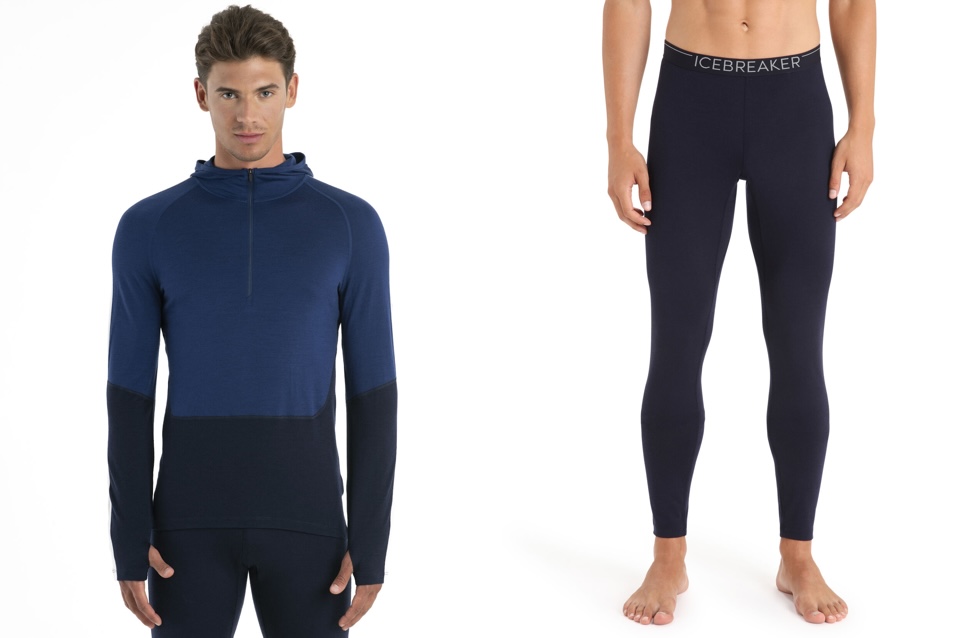
Snapshot: Icebreaker Sonebula Base Layers
- Pros: Super soft, breathable and warm.
- Cons: As with most merino products, these aren’t cheap. But if you treat them well, they’ll last a long time. (See hack below.)
- Price: Bottoms = $140 Cdn / Top = $170 Cdn
- Who Should Buy: All sporty, outdoorsy people.
- Who Shouldn’t Buy: Lazy gamers who never leave the house. And people who are perpetually cold – get the Icebreaker 260 layers instead.
- Helpful Hack: Launder your Icebreaker base layers in a mesh bag – that’ll cut down on the wear and tear.
- Author’s overall rating: 9.5/10
The Test
I wore the Icebreaker Sonebula Merino 200 long-sleeve, half-zip thermal hood top and leggings for most of the 2023/24 winter season, which was, to be frank, a sh**show of mixed weather here in the Kootenay region of British Columbia. My forays included a balmy backcountry ski trip that offered rainy conditions at the outset and snow at elevation. I also wore them on a -30°C ski tour day and to the local ski hill on epic powder days and on sunny, Spring-like days while ripping groomer laps with my kids. In the past three months, I’ve donned them about three dozen times and, in the interests of science, have yet to launder them. Would they keep me warm and, more importantly, not reek? Read on to find out.
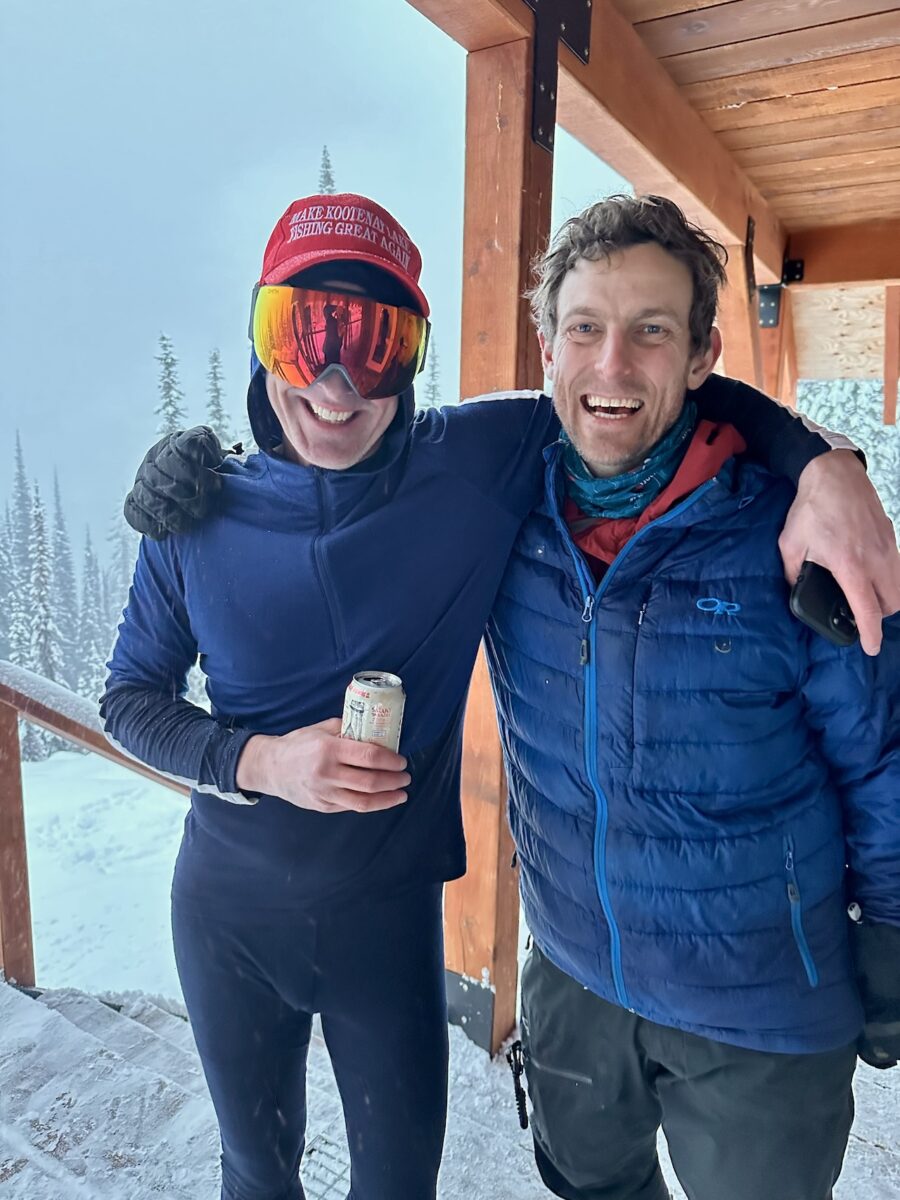
The Verdict
Any time my wife tells me I look sexy in an outfit, it immediately skyrockets to the top of my wardrobe food chain. This was true the first time I donned the Icebreaker Sonebula base layers: she took one look at me in the two-tone blue and white skivvies and was smitten. To be clear though, my wife is big into skate skiing and she considers any apparel that could be worn by Nordic Olympians sexy. With their matching racing stripes up the sides and tight fit, the Sonebula long-sleeve, half-zip thermal hooded top and the leggings fall into that category. What my wife would not be impressed by is the fact I have yet to launder the base layers despite actively using them on various backcountry and front-country ski missions for the past three months. Then again, she’ll never know unless she reads this because they smell fine! Zero stench. Try that with a polypro.
Merino wool is a wonder textile because it breathes so well, stink-causing bacteria doesn’t have a chance to take up residence. Yet it’s warm when you need it to be, like when we did a backcountry ski day last January in -30°C temps. It was one of the few times I donned the top’s hood while skiing and that proved to be excellent because it provided even more insulation. My torso was completely comfortable during that foray but to give you an idea of how cold it was, I got frostbite on one of my big toes. I should’ve had Icebreaker socks on I guess.
The Icebreaker Sonebula base layers also performed well in warmer weather. It was full Spring skiing conditions at our local resort recently and temps rose to +8°C. I simply unzipped the top and never felt too warm or clammy. That said, I wouldn’t wear these in the summer months unless on an alpine adventure because the Merino 200 rating is a bit too warm for me when temps are high. (Merino 200 means there are 200 grams of merino wool for every square metre of fabric.)
Another thing I like about Icebreaker products is they’re sustainable. Sure, the sheep have to endure uncomfortable haircuts once a year but big oil has very little stake in this game, unlike polypro garments that are made of plastics. In fact, Icebreaker is committed to being 100% plastic-free and last year it reach 96% of that goal. More info about the company’s practices can be found here. That said, ethics can come at a cost and some might balk at the hefty price tag of these base layers. Sure, you’re paying for the name Icebreaker and its robust marketing practices, which is why I’ve knocked off half a percent on the overall rating, but it’s been my experience that merino products last a helluva lot long than synthetics. If you break it down by per-cost-usage, I’ve spent $8 a day on these baselayers in the first three months I’ve owned them and I expect them to last for years. Especially if I keep refraining from washing them.
Overall, I love my Icebreaker base layers and will be wearing them on every ski mission for the foreseeable future. I’ll also don them at home whenever my wife asks me to.
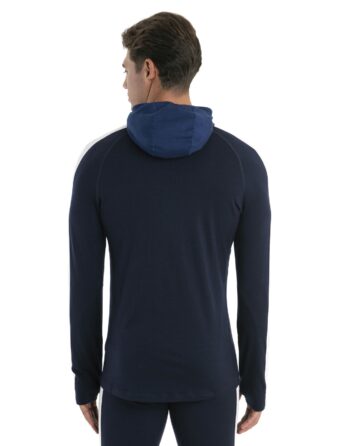 Icebreaker Sonebula Base Layers – Merino 200 Long Sleeve Half Zip Thermal Hood
Icebreaker Sonebula Base Layers – Merino 200 Long Sleeve Half Zip Thermal Hood
The Deets
- MSRP: $170 Cdn
- 100% merino wool
- Colour: midnight navy/snow
- Gusseted underarms
- Raglan sleeve construction
- Flatlock seams to prevent friction
- Fitted hood
- Drop tail hem
- Zipper chin gauard
- Thumb loops
- Merino 200 means there are 200 grams of merino wool for every square metre of fabric. (If you suffer from the cold you’ll want more wool per square metre.)
- Available in sizes S – XXL
- Also available in women-specific sizing
Icebreaker Sonebula Base Layers – Merino 200 Leggings
The Deets
-
- MSRP: $140 Cdn
- 100% merino wool
- Colour: midnight navy/snow
- Gusseted
- Flatlock seams to prevent friction
- Merino 200 means there are 150 grams of merino wool for every square metre of fabric. (If you suffer from the cold you’ll want more wool per square metre.)
- Available in sizes S – XXL
- Also available in women-specific sizing
Author’s Note: Mountain Culture Group is not paid for these reviews. They are honest expressions of our opinions. In some instances we are given the product to keep but that does not sway our assessment. If we dislike a product and feel it would score a rating of less than 5/10, we simply won’t review it.
Vince Hempsall
Vince Hempsall lives in the beautiful mountain town of Nelson, British Columbia, where he spends his time rock climbing, backcountry skiing and mountain biking (when not working). He is the editor of Kootenay Mountain Culture Magazine and online editor for the Mountain Culture Group.
Related Stories
Honest Review: Smartwool Base Layers
We asked our online editor to wear Smartwool base layers for an entire week while on a backcountry ski trip. He was…
Honest Review: Attitude Skis
Attitude Skis are the latest offering by the Fels brothers and engineer David Horsefield. Do they have a good attitude?…
Honest Review: Truckit Bucket Tote
Wewerke Design says its Truckit Bucket will forever change the way you haul gear. Editor Vince Hempsall tests to see if…
Honest Review: Patagonia R0 Hoody
Wanna look like a Navy Seal? We suggest donning the Patagonia R0 Hoody the next time you're hanging in, on or by the…
Honest Review: Roscoe Outdoor Pants
Finding an awesome women's backpacking pant is not an easy task. We sent editor Clare Menzel out to review two such…
Honest Review: Black Diamond Skylight Tent
If she's at her desk, editor Clare Menzel is probably looking out the window. So we sent the stargazer into the field…


